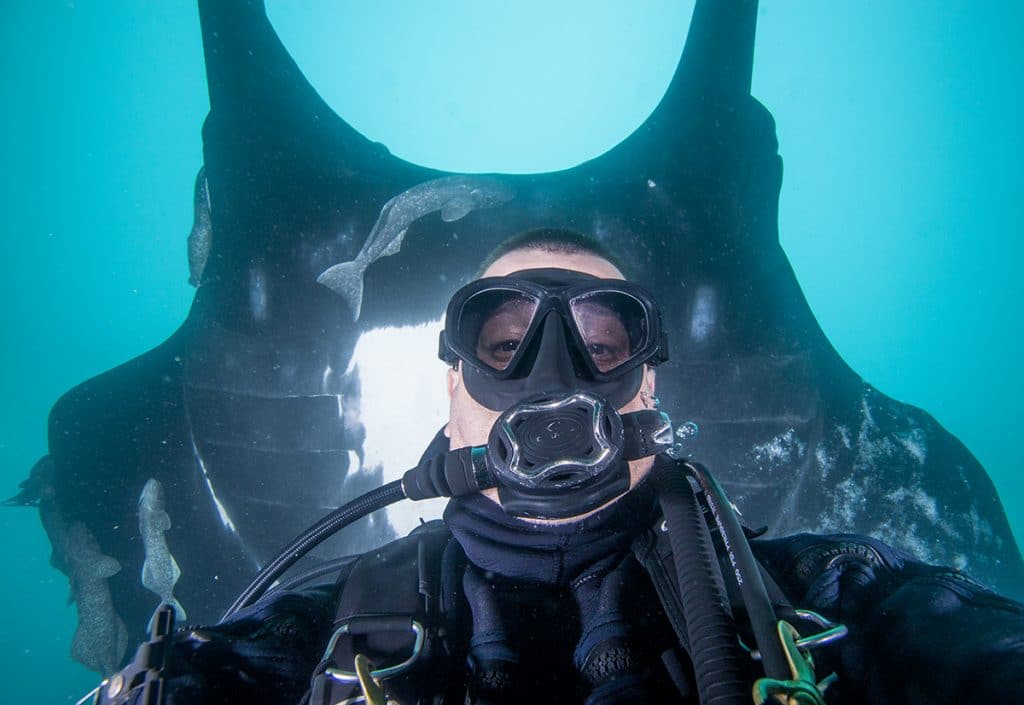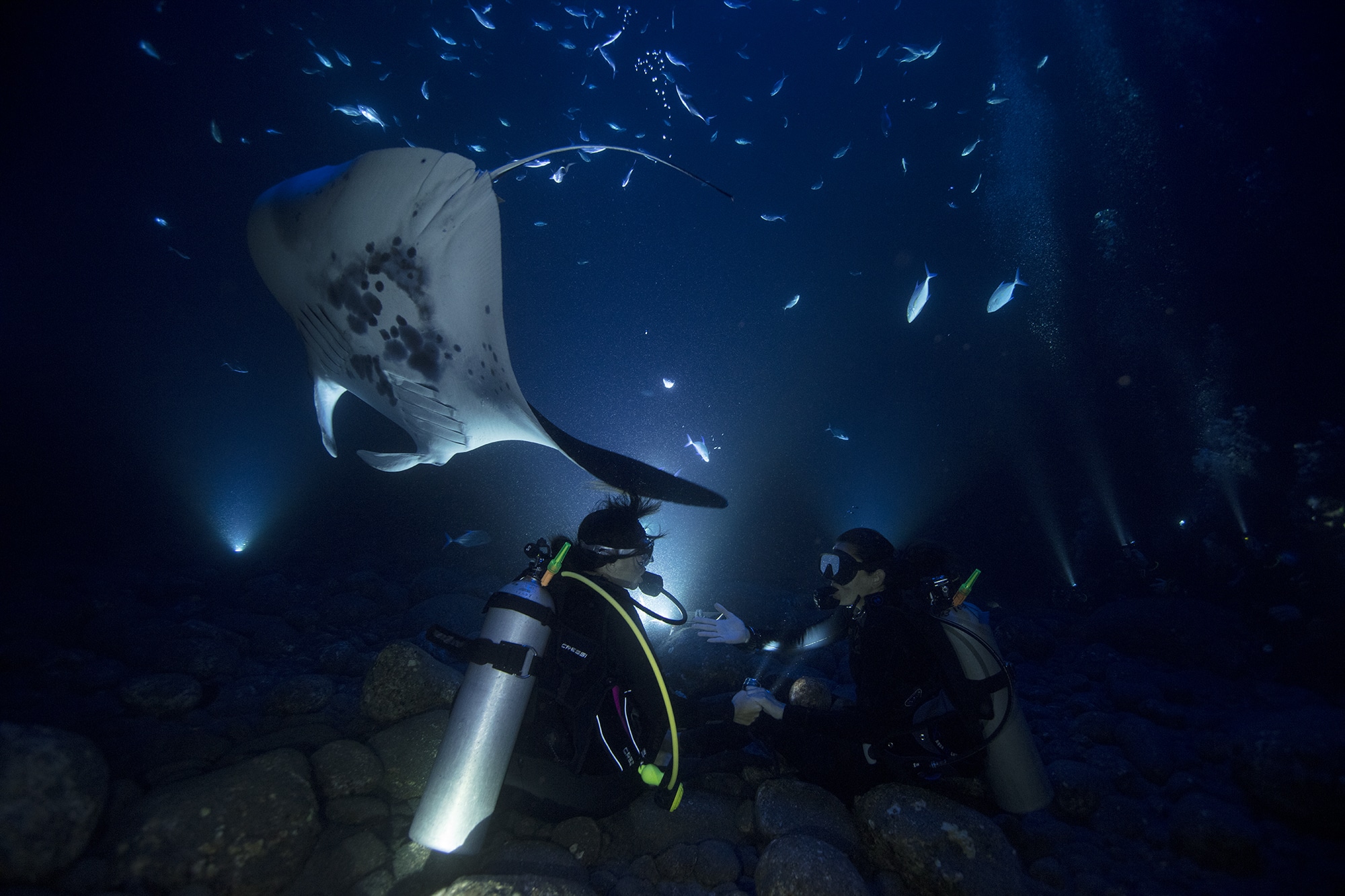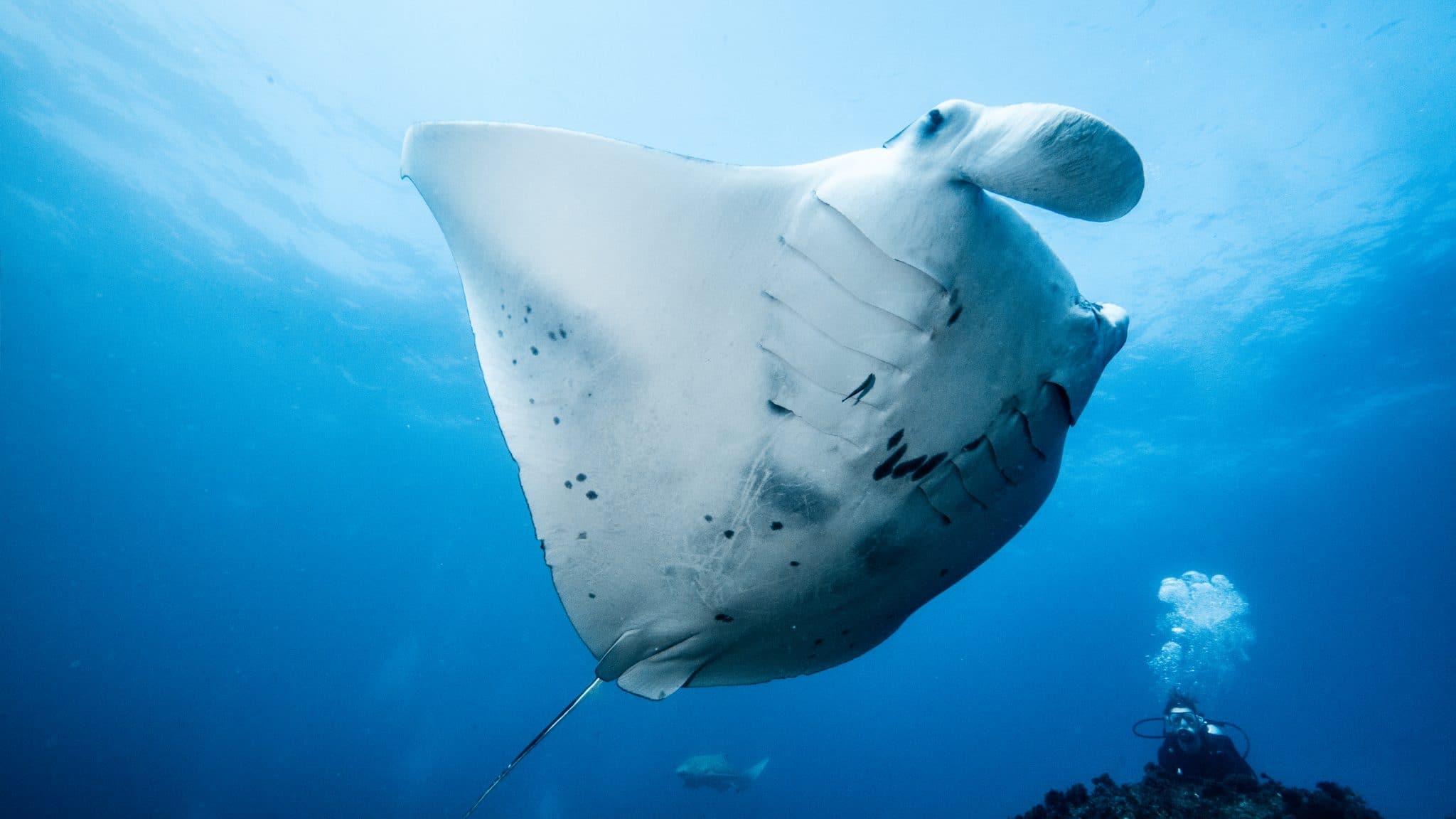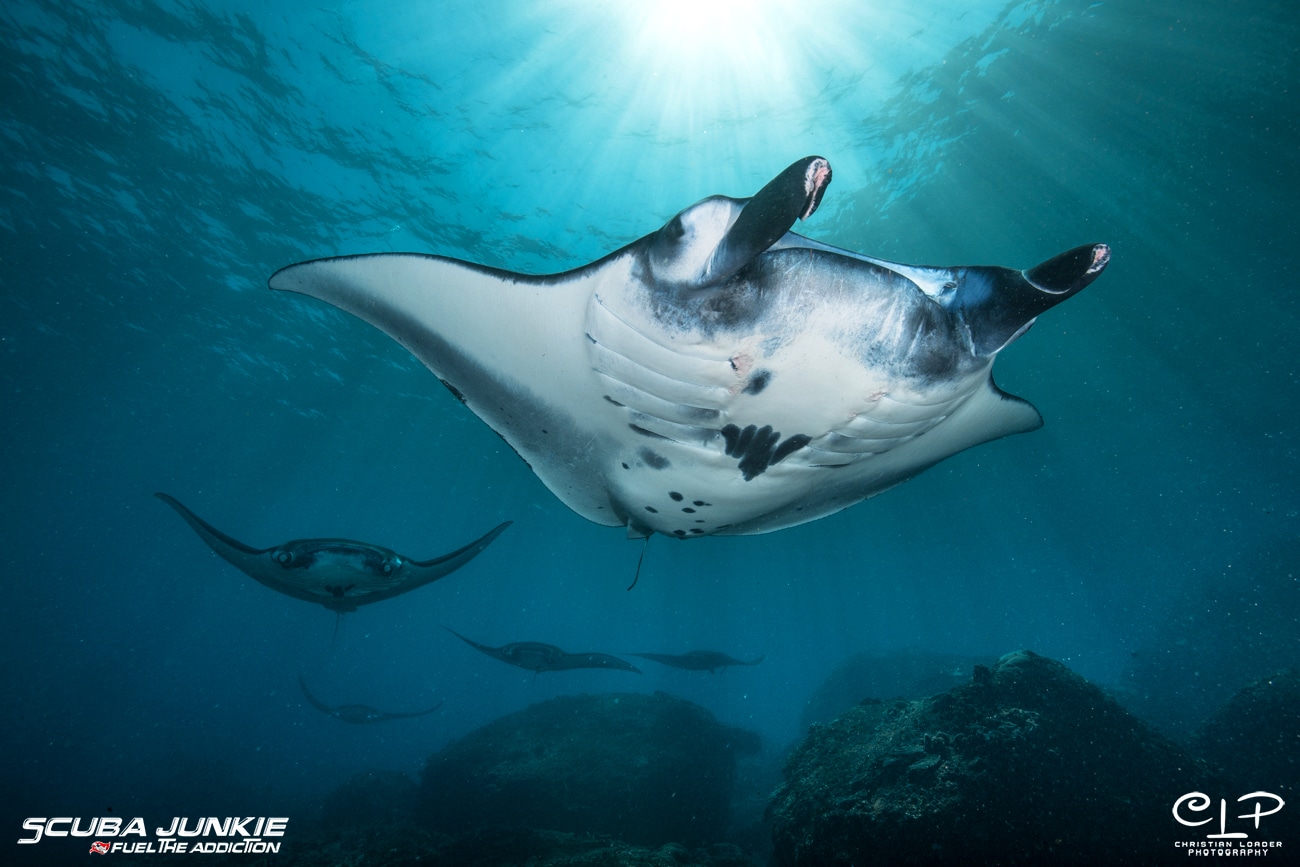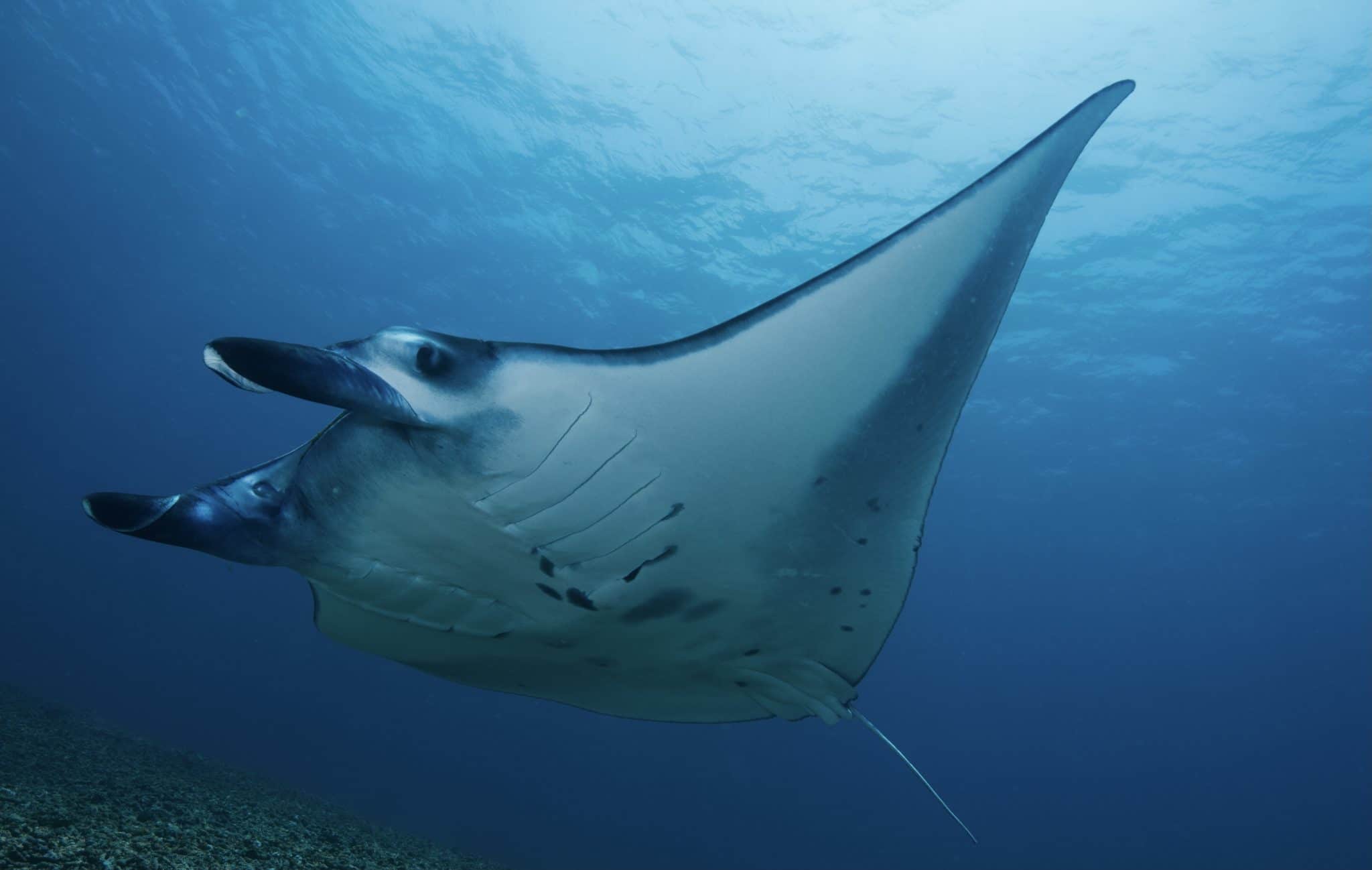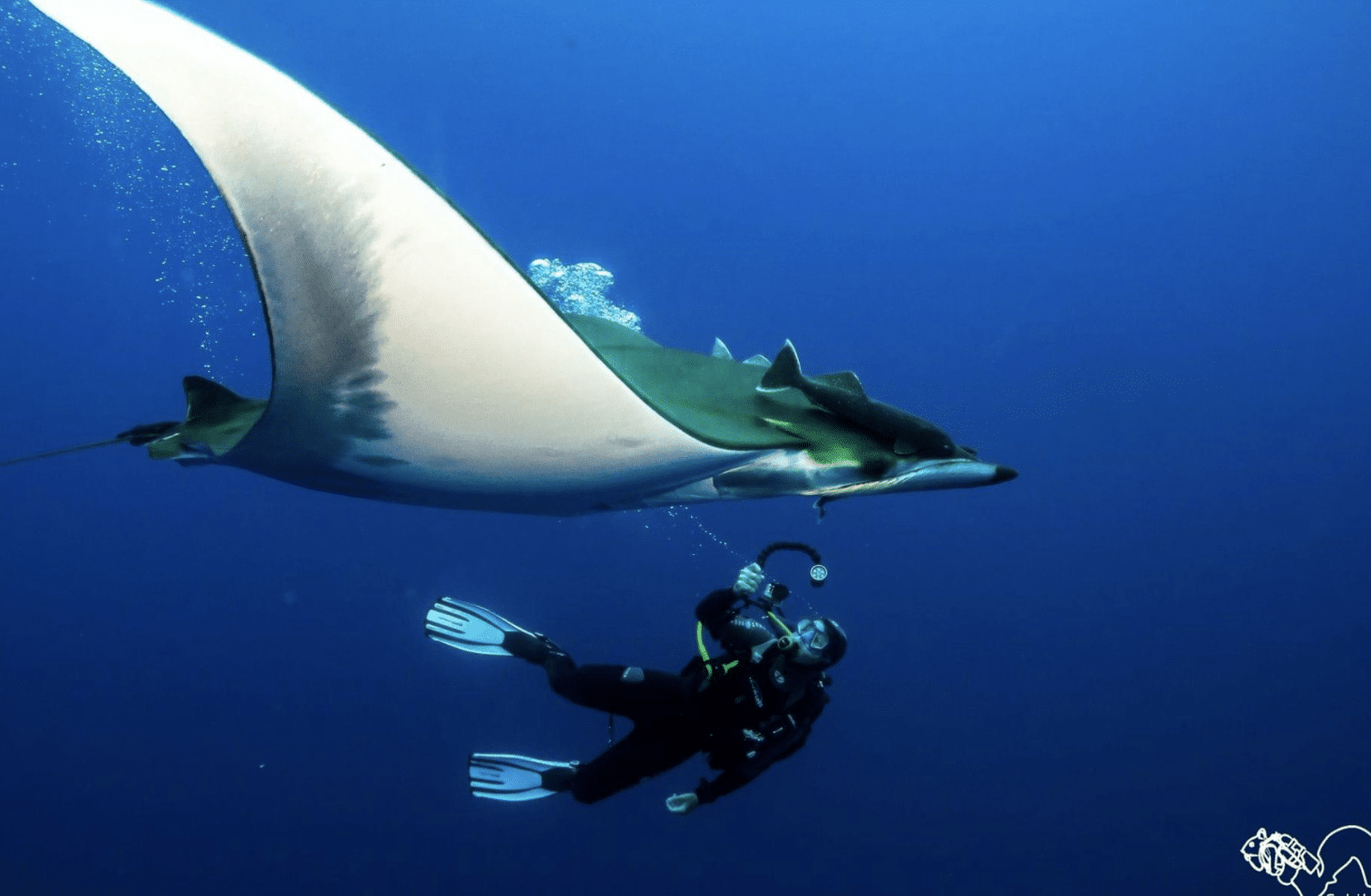Marine Life & Conservation Blogs
Top Destinations to dive with Manta Rays
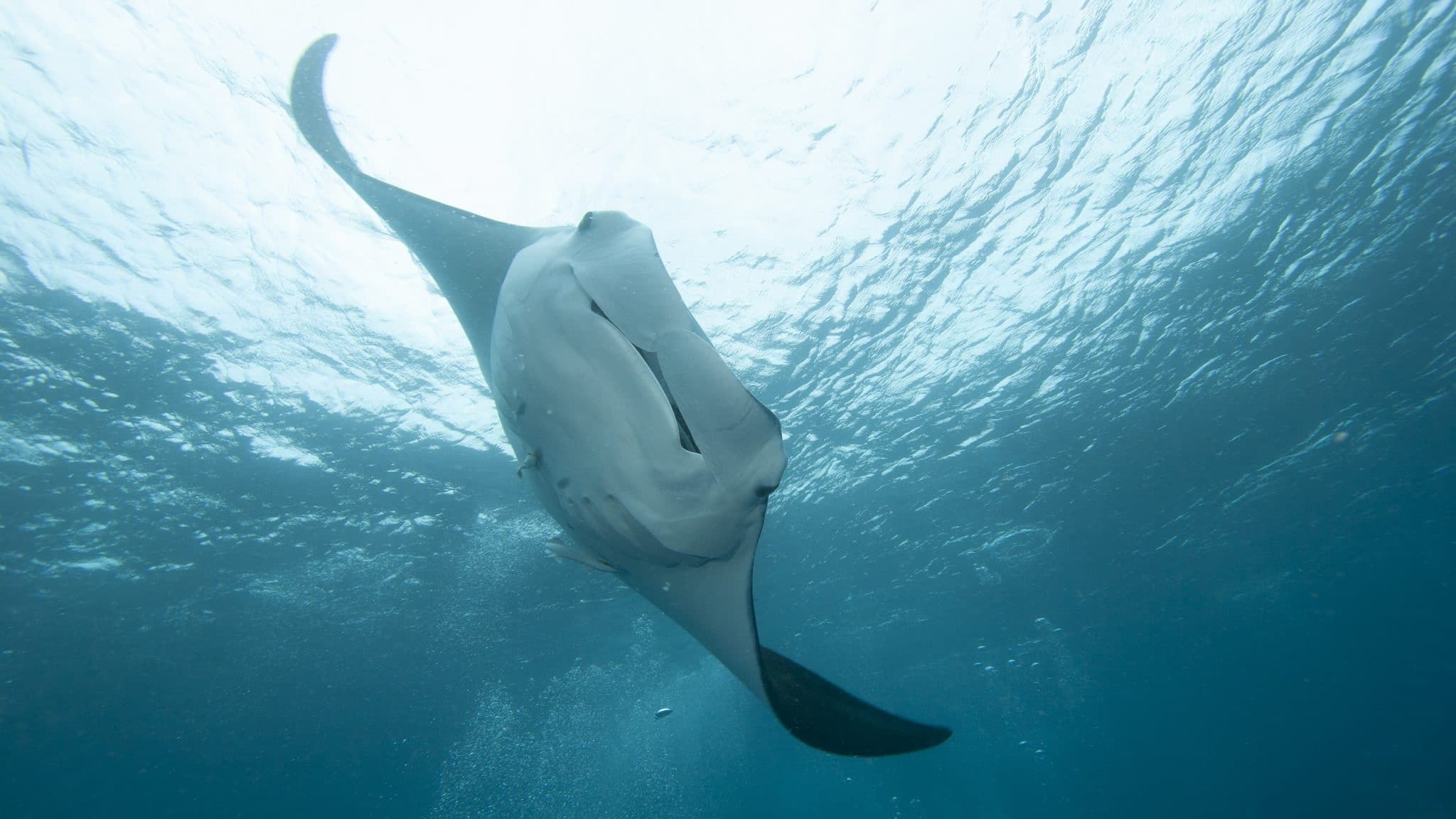
 In their mission to create a billion Torchbearers to explore and protect the ocean, PADI is encouraging divers to seek adventure and experience first-hand the vital eco-systems below the surface of the ocean.
In their mission to create a billion Torchbearers to explore and protect the ocean, PADI is encouraging divers to seek adventure and experience first-hand the vital eco-systems below the surface of the ocean.
To further raise awareness of this mission on International Manta Ray Day (17 September 2021), PADI has rounded up the top destinations in the world that are currently open to divers.
Machadilla National Park, Isla de la Plata, Ecuador
Diving in Ecuador offers a special paradise for scuba divers, in which the chance of encountering marine species nowhere else on earth is extremely high due to the heavy currents and nutrient rich waters. And for those keen to dive with manta rays, head out with PADI 5 Star Dive Center Exploramar Diving, or PADI 5 Star Dive Center Mares Ecuador here they take divers out to Machadilla National Park in Isla de la Plata for a chance to greet these graceful creatures every July to September.
Find out more with PADI’s Dive Guide for Ecuador
Kona, Big Island, Hawaii
Hawaii’s volcanic origins and isolated geographical location makes for a whirlwind of scuba diving encounters underwater, with manta ray encounters being likely all year long. For those looking for an extra special experience, PADI 5 Star Dive Center Jack’s Diving Locker offers a manta ray night dive and a PADI Distinctive Specialty Course called Manta Ray Diver, which covers everything from the manta ray anatomy to cleaning habits, reproduction and how to identify individual rays in the local population.
Find out more with PADI’s Dive Guide for Hawaii
Bryon Bay, Australia
For those who are currently in Australia, they can have their backyard manta ray encounter with PADI 5 Star Dive Center Sundive Byron Bay. The summer months of December to May bring manta rays to the nearby Julia Rocks Marine Reserve, which National Geographic once acknowledged as one of the top 20 dives in the world.
Find out more with PADI’s Dive Guide for Australia
Manta Point, Nusa Penida, Bali
The name speaks for itself. Manta Point in Bali is a haven for manta rays all year long, with the best time to see them being from April to May. PADI 5 Star Dive Center and Resort Scuba Junkie Penida offers the ultimate manta ray diving experience in the area, adding coral dives and drift dives to the day’s adventure.
Find out more with PADI’ Dive Guide for Bali
Komodo National Park, Labuan Bajo, Indonesia
One of Indonesia’s most famous diving destinations is also one of the best places to dive with manta rays! PADI 5 Star Dive Resort Blue Marlin Komodo is the perfect place for a manta ray holiday, where divers can stay at the dive resort while getting their PADI Open Water Diver certification and then hop aboard their dive vessel for a day of diving out at sea with manta rays!
Find out more with PADI’s Dive Guide for Indonesia
Six Senses Manta Point, Laamu Atoll, Maldives
Crystal clear warm waters, white sandy beaches and manta rays—PADI 5 Star Dive Resort Six Senses Laamu offers the ultimate luxurious manta ray holiday. As the only dive resort in the Laamu Atoll, divers of all levels will have extremely personable encounters with manta rays every month of the year in this world-class diving area. There are also more than 180 PADI Dive Centers and Resorts in the Maldives that can take divers out to have a manta ray encounter.
Find out more with PADI’s Dive Guide for the Maldives
Azores, Portugal
The islands that make up the Azores off the coast of Portugal are one of the most diverse for marine life. One specific type of manta rays known as the Mobula birostris is known tohang out in large groups around the island of St. Maria between June and October, with PADI 5 Star Haliotis Dive Center offering guided boat trips to the island.
Find out more with PADI’s Dive Guide for Portugal
Diving with whale sharks and manta rays can make a difference in protecting these incredible species for future generations – dive tourism encourages protection from local communities and governments. But its important to always adhere to local guidelines and best practices to ensure these creatures’ well-being is always at the forefront. PADI dive operators understand the importance of using the proper equipment, the time of day to dive with sharks, and the maximum number of operators that should be on the water at any given time. To learn more about responsible shark and ray tourism and other ways you can support the protection of these incredible animals, visit padi.com/aware/sharks.
Marine Life & Conservation Blogs
Creature Feature: Dusky Shark

 In this series, the Shark Trust will be sharing amazing facts about different species of sharks and what you can do to help protect them.
In this series, the Shark Trust will be sharing amazing facts about different species of sharks and what you can do to help protect them.
This month we’re taking a look at the Dusky Shark, a highly migratory species with a particularly slow growth rate and late age at maturity.
Dusky sharks are one of the largest species within the Carcharhinus genus, generally measuring 3 metres total length but able to reach up to 4.2 metres. They are grey to grey-brown on their dorsal side and their fins usually have dusky margins, with the darkest tips on the caudal fin.
Dusky Sharks can often be confused with other species of the Carcharhinus genus, particularly the Galapagos Shark (Carcharhinus galapagensis). They have very similar external morphology, so it can be easier to ID to species level by taking location into account as the two species occupy very different ecological niches – Galapagos Sharks prefer offshore seamounts and islets, whilst duskies prefer continental margins.
Hybridisation:
A 2019 study found that Dusky Sharks are hybridising with Galapagos Sharks on the Eastern Tropical Pacific (Pazmiño et al., 2019). Hybridisation is when an animal breeds with an individual of another species to produce offspring (a hybrid). Hybrids are often infertile, but this study found that the hybrids were able to produce second generation hybrids!
Long distance swimmers:
Dusky sharks are highly mobile species, undertaking long migrations to stay in warm waters throughout the winter. In the Northern Hemisphere, they head towards the poles in the summer and return southwards towards the equator in winter. The longest distance recorded was 2000 nautical miles!
Very slow to mature and reproduce:
The Dusky Shark are both targeted and caught as bycatch globally. We already know that elasmobranchs are inherently slow reproducers which means that they are heavily impacted by overfishing; it takes them so long to recover that they cannot keep up with the rate at which they are being fished. Dusky Sharks are particularly slow to reproduce – females are only ready to start breeding at roughly 20 years old, their gestation periods can last up to 22 months, and they only give birth every two to three years. This makes duskies one of the most vulnerable of all shark species.
The Dusky Shark is now listed on Appendix II of the Convention on the Conservation of Migratory Species (CMS), but further action is required to protect this important species.
Scientific Name: Carcharhinus obscurus
Family: Carcharhinidae
Maximum Size: 420cm (Total Length)
Diet: Bony fishes, cephalopods, can also eat crustaceans, and small sharks, skates and rays
Distribution: Patchy distribution in tropical and warm temperate seas; Atlantic, Indo-Pacific and Mediterranean.
Habitat: Ranges from inshore waters out to the edge of the continental shelf.
Conservation status: Endangered.
For more great shark information and conservation visit the Shark Trust Website
Images: Andy Murch
Diana A. Pazmiño, Lynne van Herderden, Colin A. Simpfendorfer, Claudia Junge, Stephen C. Donnellan, E. Mauricio Hoyos-Padilla, Clinton A.J. Duffy, Charlie Huveneers, Bronwyn M. Gillanders, Paul A. Butcher, Gregory E. Maes. (2019). Introgressive hybridisation between two widespread sharks in the east Pacific region, Molecular Phylogenetics and Evolution 136(119-127), https://doi.org/10.1016/j.ympev.2019.04.013.
Marine Life & Conservation Blogs
Creature Feature: Undulate Ray

 In this series, the Shark Trust will be sharing amazing facts about different species of sharks and what you can do to help protect them.
In this series, the Shark Trust will be sharing amazing facts about different species of sharks and what you can do to help protect them.
This month we’re looking at the Undulate Ray. Easily identified by its beautiful, ornate pattern, the Undulate Ray gets its name from the undulating patterns of lines and spots on its dorsal side.
This skate is usually found on sandy or muddy sea floors, down to about 200 m deep, although it is more commonly found shallower. They can grow up to 90 cm total length. Depending on the size of the individual, their diet can range from shrimps to crabs.
Although sometimes called the Undulate Ray, this is actually a species of skate, meaning that, as all true skates do, they lay eggs. The eggs are contained in keratin eggcases – the same material that our hair and nails are made up of! These eggcases are also commonly called mermaid’s purses and can be found washed up on beaches all around the UK. If you find one, be sure to take a picture and upload your find to the Great Eggcase Hunt – the Shark Trust’s flagship citizen science project.
It is worth noting that on the south coasts, these eggcases can be confused with those of the Spotted Ray, especially as they look very similar and the ranges overlap, so we sometimes informally refer to them as ‘Spundulates’.
Scientific Name: Raja undulata
Family: Rajidae
Maximum Size: 90cm (total length)
Diet: shrimps and crabs
Distribution: found around the eastern Atlantic and in the Mediterranean Sea.
Habitat: shelf waters down to 200m deep.
Conservation Status : As a commercially exploited species, the Undulate Ray is a recovering species in some areas. The good thing is that they have some of the most comprehensive management measures of almost any elasmobranch species, with both minimum and maximum landing sizes as well as a closed season. Additionally, targeting is entirely prohibited in some areas. They are also often caught as bycatch in various fisheries – in some areas they can be landed whilst in others they must be discarded.
IUCN Red List Status: Endangered
For more great shark information and conservation visit the Shark Trust Website
Image Credits: Banner – Sheila Openshaw; Illustration – Marc Dando
-

 News3 months ago
News3 months agoHone your underwater photography skills with Alphamarine Photography at Red Sea Diving Safari in March
-

 News3 months ago
News3 months agoCapturing Critters in Lembeh Underwater Photography Workshop 2024: Event Roundup
-

 Marine Life & Conservation Blogs3 months ago
Marine Life & Conservation Blogs3 months agoCreature Feature: Swell Sharks
-

 Blogs2 months ago
Blogs2 months agoMurex Resorts: Passport to Paradise!
-

 Blogs2 months ago
Blogs2 months agoDiver Discovering Whale Skeletons Beneath Ice Judged World’s Best Underwater Photograph
-

 Gear Reviews2 weeks ago
Gear Reviews2 weeks agoGEAR REVIEW – Revolutionising Diving Comfort: The Sharkskin T2 Chillproof Suit
-

 Marine Life & Conservation2 months ago
Marine Life & Conservation2 months agoSave the Manatee Club launches brand new webcams at Silver Springs State Park, Florida
-

 Gear Reviews3 months ago
Gear Reviews3 months agoGear Review: Oceanic+ Dive Housing for iPhone


